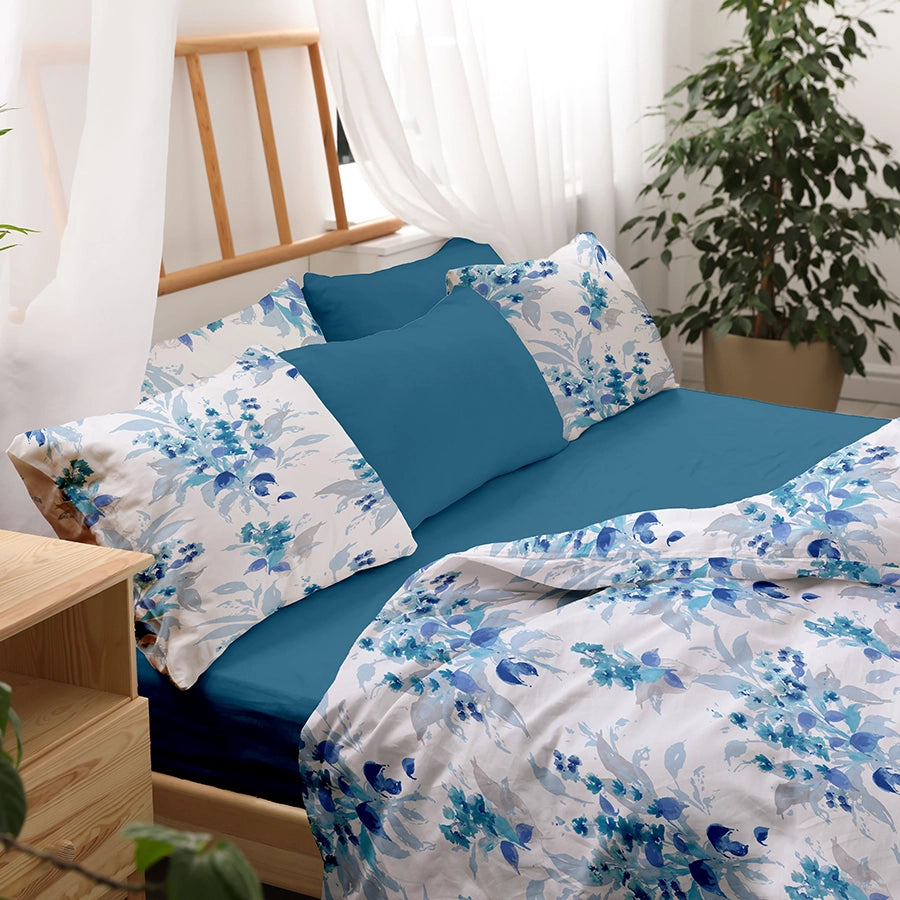What Is Yarn Count And How Does It Affect Bed Sheets?
The nightly companions, the bedsheets, essential for a good night's sleep, are crafted by the result of countless contributions. While factors like thread count often grab the spotlight, there is a silent hero hiding in the process: Yarn Count.
Yarn count is basically a numerical value that reflects the thickness of the yarn that goes into making the bed linens. This minor detail can create a big difference in the comfort, breathability and longevity of the sheets.
Want the inside scoop? Hop in and get to know all about yarns that have you yawning the moment you hit the bed.
What Is Yarn?
Behind every peaceful sleep is the incredible yarns that are transformed into the softest sheets. The fibres from cotton or linen are twisted together to form long, thin strands of yarn.
The path from raw fibres to yarn is paved with cleaning, aligning and precisely intertwining the fibres to obtain the desired thickness, with the art of spinning.
These delicate yarns are in turn combined to create threads, which are finally woven together to become the very essence of the sheet - the fabric.
You know, yarn can be classified as staple yarn or filament yarn based on its nature. Staple yarn includes many natural fibres like cotton and linen and has an average fibre length. Bed linens made from long-staple cotton are luxuriously soft from day one and stay that way for years.
Filament yarn, on the other hand, is made from long, continuous fibres and features both synthetic and some natural materials like silk. There is a variation in how one measures these yarn types.
Yarn Count - What Is That?
Yarn count, an important parameter, is a measurement system showing the finesse or the diameter of the yarn. It is represented by a number and signifies the ratio of yarn weight to its length or vice versa.
Simply put, this number shows you how thick or thin a yarn is. Bedsheets with a yarn count of 100s are a great choice as they feel soft, and comfortable, ensuring a dreamy sleep.
Sometimes, yarn counts are mistaken for thread counts. But, there is a clear distinction between them. While thread count gives you information on how many threads are packed into one square inch of the fabric, yarn counts aim to find the coarseness of the yarn.
Calculating Yarn Count
There are different ways of measuring yarn count, each with its own units and interpretations. Knowing these hidden factors will help you make informed decisions when buying sheets. These systems actually explain why some sheets feel super soft, last long, and cost more than others.
■ Direct Count System
The direct count system offers a simple and straightforward method to determine the finesse of the filament yarn, by taking its weight into consideration.
To understand it better, think of two yarns having the same fixed length, one as thick as a shoelace and the other, as delicate as a sewing thread. The thicker yarn will obviously weigh more, right? Well, that's the basic idea behind this system.
And, instead of simply weighing it, yarn count units like Tex or Denier are used. Here, the higher the yarn count, the coarser the yarn and the lower the count, the thinner the yarn would be. So, say 10 Tex yarn bed linen will be finer than 20 Tex yarn sheets.
■ Indirect Count System
Useful for measuring staple yarn like cotton, this system changes the method upside down and deviates from direct count analysis. Yes, the length of the yarn is focused here with the weight remaining constant.
To grasp what this system signifies, imagine two yarns, weighing the same. The yarn that stretches out to a longer length will be thinner, without a doubt.
So, the higher the count, the finer the yarn and the lower the count, the thicker the yarn. For example, bedsheets with a 50s yarn count will be coarser than sheets with a 25s yarn count.
In essence, this yarn count system will tell you how much length of yarn makes up the specific weight. Yarn count is expressed in units such as English (Cotton Count), Metric, and Worsted Count.
Effect Of Yarn Count On Sheets
1. Texture
Bed lines have the magical power to give you a deeply restful sleep, where you are blissfully unaware of the world around you. Knowing yarn counts will help you pick sheets that exceed your desired comfort level. And, cosy nights start with the right yarn count.
Luxurious, smooth and high-quality sheets are the fruits of high yarn counts as they translate to more threads per inch square due to thinner yarns. For a sheet that feels crisp and light like a gentle breeze, lower yarn counts take the charge.
2. Breathability
Lower yarn count sheets allow for better airflow due to the looser weave, keeping you cool and preventing overheating. They are the best for those summer nights.
The sheets with high yarn counts tend to trap more heat as the threads are densely woven together. They are perfect to snuggle up with a cup of coffee and a book during the chilly months.
3. Durability
Very thin fibre bed linens are as fragile as a flower. They may be easily damaged and require careful handling. But, longevity seems to be a stronger point for sheets with large yarn fibres.
4. Price Tag
Higher yarn count bedsheets have that silky, refined finish that feels amazing against the skin. They craft a beautiful drape that adds aesthetics to your room. You have to pay extra for that fancy look and exotic quality.
Sheets having lower yarn count go easy on your wallet. They may not be the softest in the market but they surely provide you with a comfy sleep.
Blue Dahlia offers the finest bedsheets of all land. Elegant designs, a rainbow of colours and premium fabric make our bedding unique. Explore our vast collection of sheets for a calming sleep today, tomorrow and forever!





Leave a comment